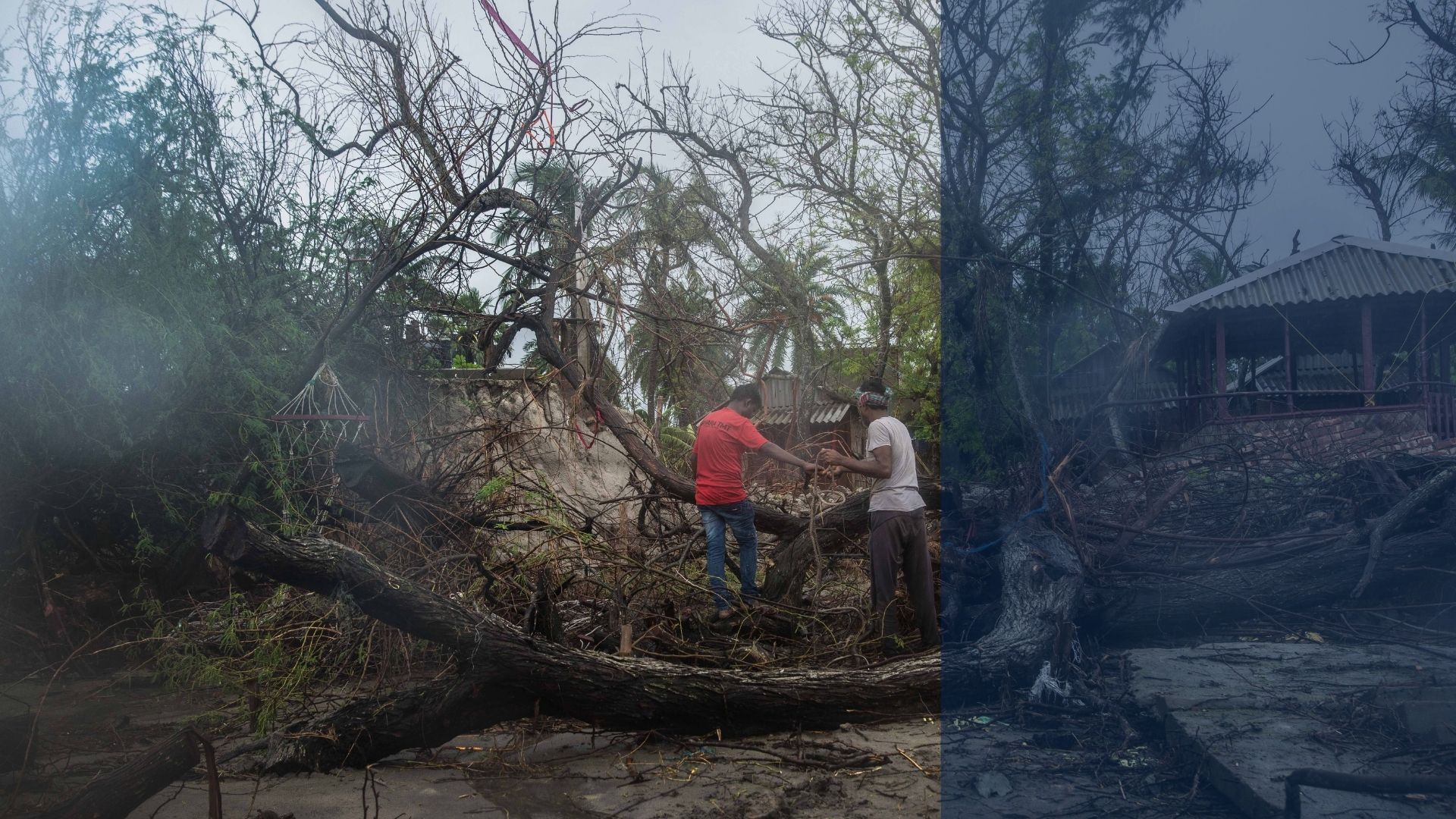Climate change, a global phenomenon, is already affecting lives and livelihoods across the world. The Sundarbans, lining the mighty Bay of Bengal, and its flora and fauna have been taken victims of these changes. Mousuni Island in the Sundarbans is one such vulnerable area. Human settlement was established in Mousuni between 1949-1951, and it can only be accessed by taking a ferry from the mainland even to this day. The island has four moujas or administrative blocks — Bagdanga, Baliara, Kusumtala and Mousuni, with the current population clocking in 24,000 people. The economy of Mousuni is largely agrarian, with primary farm produces being paddy, bitter gourd, betel leaves, all of which are mostly sold in Kolkata markets. However, things are changing rapidly. Researchers say that the seawater level in the Bay of Bengal has risen at the rate of 5.6 millimetres per decade, higher than the global average. The problem started with the island’s western side, where large-scale soil erosion occurred. According to a research, the island sunk by 2.28 percent (0.64 square kilometres) between 2001 to 2009. Islanders are facing constant threat of displacement because of recurring cyclones triggered by the warmer sea surface of the Bay of Bengal. However, things went south rather steadily after Cyclone Yass made landfall near Balasore in Odisha, on 26 May. During high tide that afternoon, a storm surge in the Bay of Bengal triggered high waves in the Muriganga river, which were around one to two metres higher than usual. Water breached the dams and flooded the low-lying island, damaging homes and farms in its wake. At the moment, 80 percent of the farmland in Mousuni is under water. Farmers on the island explained how when saline water once reaches the ground, it can’t be used for agriculture for three years or more. This continuous loss of livelihood has fuelled migration in households, where people in search of labour jobs in other states like Kerala and Maharashtra, and even the Gulf nations in some stray instances, have been forced to abandon Mousuni. I visited the island on 29 May, and then again on 23 June. Despite multiple relief efforts made by the state government and civilians, the island remains in a state of disarray. Numerous affected families live under makeshift tents, flood houses, and a few even on the dams. There’s an acute scarcity of drinking water. Multiple women have complained that they don’t have proper access to toilets either. Here is a glimpse of their struggles that points to what the effects of climate change actually look like in the long run. [imgcenter]
***
— Featured image: On 26 May 2021, Cyclone Yass made landfall near Balasore, Odisha. Though the cyclone missed the Indian Sundarbans, the storm triggered a high coastal wave in rivers which breached the dams and flooded numerous villages in Sundarban, as has been tradition. Mousuni was one such island, which has been ravaged by the turbulent waters it guards. Also read on Firstpost: How the shrinking island of Mousuni in the Sundarbans underlines the region’s growing concerns about rapid land loss
)